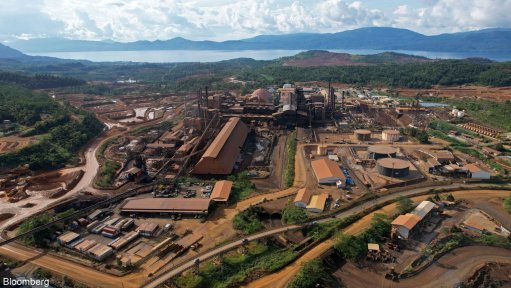
Canada is ramping up efforts to become a leader in the green energy transition, unveiling almost C$83-billion ($61-billion) in investment tax credits over the next decade, including tens of billions aimed at building a clean electricity grid.
The measures, along with increased health spending, will swell the country’s deficit at a time of heightened economic risks. Prime Minister Justin Trudeau’s government is making the case that the cost is unavoidable if Canada hopes not only to live up to its climate promises, but to profit from the world’s transition away from fossil fuels to cleaner power.
“We are going to make Canada a reliable supplier of clean energy to the world, and from critical minerals to electric vehicles, we are going to ensure that Canadian workers mine, and process, and build, and sell the goods and the resources that our allies need,” Finance Minister Chrystia Freeland said in prepared remarks to parliament.
Thanks mostly to hydroelectric and nuclear power, roughly 83% of Canada’s electricity is already generated from low-carbon sources. However, to meet its pledge for net-zero emissions by 2050, more of the country’s energy needs will have to come from electricity. Some provinces still burn coal and natural gas to generate power, and existing grids are nowhere near able to handle the expected surge in demand from electric vehicles, home heating and manufacturing.
The budget includes the first look the price tag of green incentives announced last year, as well as new policies. The estimated costs, out to 2034, include:
- C$25.7-billion on a 15% refundable clean electricity tax credit that builds out capacity for zero- emission electricity
- C$25.7-billion on a 15% refundable clean electricity tax credit that builds out capacity for zero- emission electricity
- C$11.1-billion for a 30% refundable clean technology manufacturing tax credit, to boost investment in manufacturing and processing key clean technologies, as well as extracting, processing and recycling critical minerals
- C$516-million in additional funding for a previously announced carbon-capture investment tax credit, bringing the total to C$12.4 billion
- C$17.6-billion for a hydrogen investment tax credit
- C$15.8-billion for the previously announced clean technology tax credit
The tax credits come on top of other investment subsidies in the past year, notably to produce electric vehicles and batteries. The question is whether it will be enough to allow Canada, which is one of the world’s largest oil producers, to be a major player in emerging revenue streams from the global shift to zero-emissions power. The US Inflation Reduction Act, signed by President Joe Biden last year, includes $369 billion in green incentives but is uncapped, meaning as much as $1.7 trillion in private and public investments could be stimulated over 10 years, the budget document noted.
The scale of investment required for Canada to meet its net-zero emissions commitment by 2050 is enormous, with estimates ranging from C$60-billion to C$140-billion per year, the budget states. Most of that will have to come from the private sector, encouraged by government policies that mobilize private capital.
“Canada needs to react but it’s being done, unfortunately, in a difficult economic context and in a difficult fiscal context,” said Dominique Lapointe, director of macro strategy at Manulife Investment Management.
Freeland’s budget includes an additional C$516-million in tax incentives for carbon capture, utilization and storage, on top of the almost C$13-billion previously announced. Lowering emissions from fossil fuel production helps meet Canada’s climate goals, while protecting oil export revenue, but emissions from that oil still contribute to global warming when it’s burned by end users - so-called Scope 3 emissions.
Fossil fuel producing countries often argue that Scope 3 emissions are static because if they didn’t sell the oil, someone else would, said Rachel Doran, director of policy strategy for Clean Energy Canada. But there is also the potential for Canada to provide a “butterfly effect” that, along with bigger policy measures from the European Union and US, creates a tipping point for global decarbonisation.
“We don’t have the fiscal power to compete, dollar for dollar,” she said. “But we should be part of this global movement.”